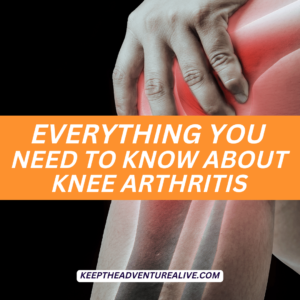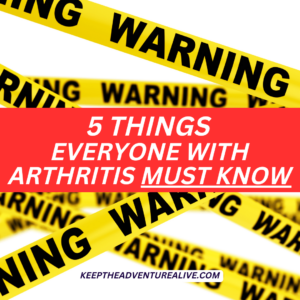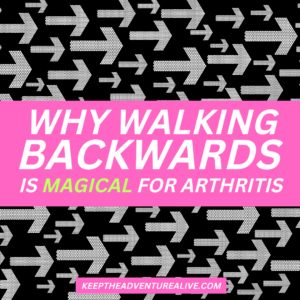Did you know that menopause can actually increase joint pain, leading to something called menopausal arthritis?! It’s a real thing that can make moving around let alone exercising very difficult. Estrogen loss can impact cartilage and joint health as well as inflammation in your body. There are actually natural remedies to treat arthritis caused by menopause! Learn how to identify symptoms and what to do about it below.
Arthritis on top of menopause, you've got to be kidding!
Unfortunately, it is common to have joint pain accompanying menopause whether you are peri- post- or somewhere in between. There are a few reasons for this which you will be able to see below.
One caveat I do want to mention first is that there is hope even if you have menopausal arthritis. There is hope for both pain relief and better movement. There is hope for an active life.
Even if your joint pain has made it difficult to walk longer distances, to be as active as you’d like to be, and/or going up and down the stairs- it is possible to regain both the ability and the strength.
Take a look at some of the amazing members of Adventurers for Life and what they have been able to accomplish.
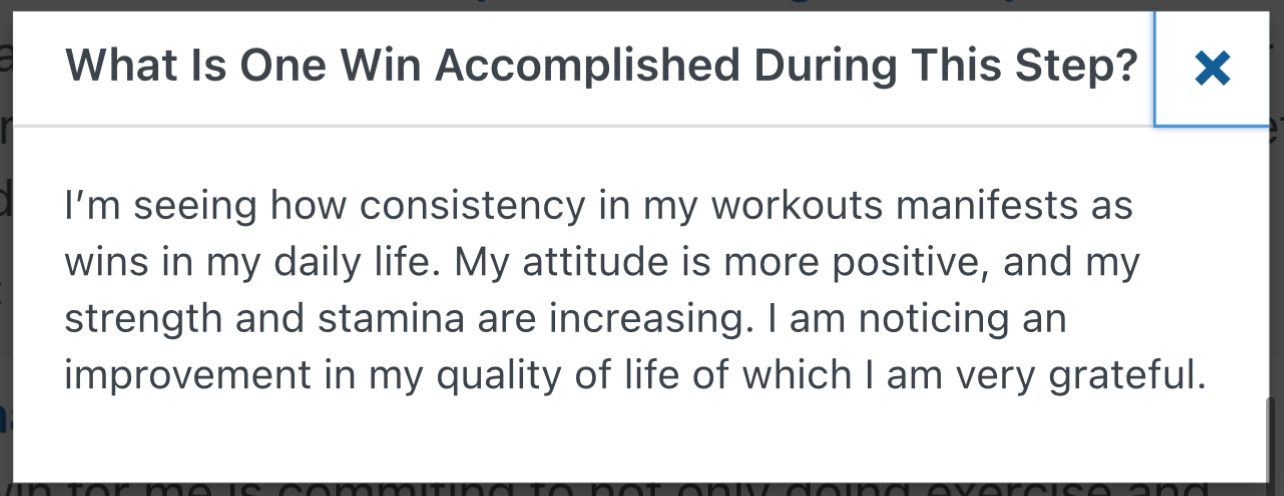
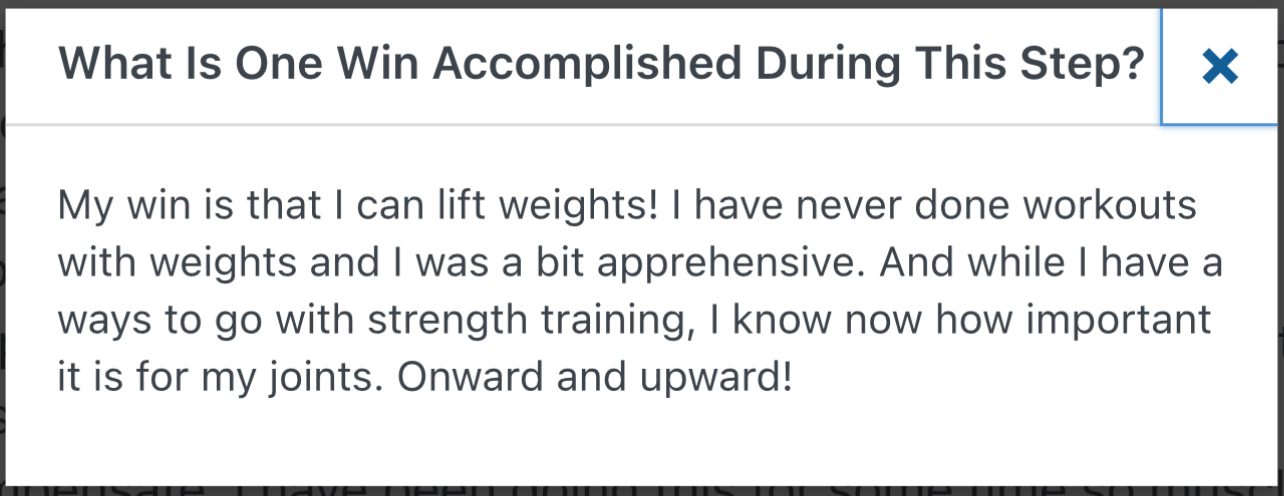
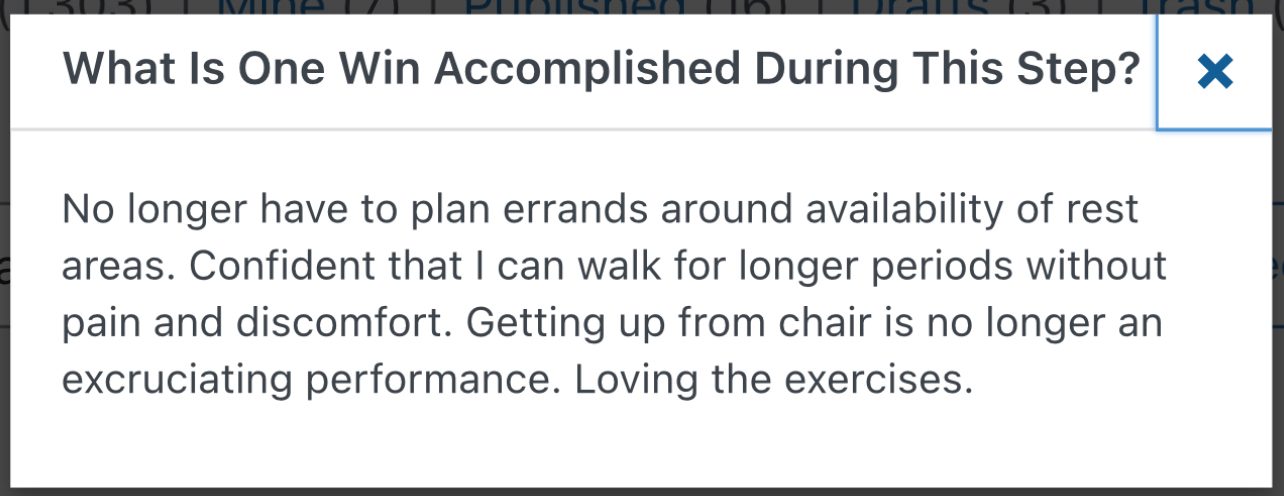
Menopause does not need to take away your active lifestyle. You just have to do the right things to keep your joints healthy even with lower estrogen levels.
Menopause is a natural process most women endure and at least half of those women will experience joint aches and pains. These can commonly occur in your neck, shoulder, knees, hips, or hands. Let’s take a look at some of the symptoms.
Menopausal Arthritis Symptoms
Whether you are just starting menopause or are post-menopausal, there are a few symptoms that could point to arthritis pains caused by an estrogen depletion, although it can be hard to figure out if that is the sole cause.
It is important to know that menopausal arthritis is a possibility, as many people believe something much more serious is going on.
Identifying these symptoms of menopausal arthritis can help guide your treatment plan and know what questions to ask.
The common symptoms include (but are not limited to):
- Joint stiffness, especially in the morning that resolves within 30 minutes of waking and movement
- Fluctuating joint pain that simultaneously occurs with menopausal symptoms
- Joint pain without any mechanism of injury
- Feelings of muscle weakness
- Limited range of motion
- Nodules that begin to form on your hands
- Poor sleep due to joint aches and menopause
- Joints that appear to be irritated easily
Most of these symptoms are common with osteoarthritis so it can be hard to differentiate if menopause is one of the causes. Here is an article describing what osteoarthritis feels like.
I have known a few ladies who had osteoarthritis before starting menopause and they noticed a significant increase in joint pain since going through it- primarily in the knees.
Each person’s experience may be a little different but these symptoms tend to be relatively consistent.
Let’s look at why estrogen depletion can lead to joint pain.
Estrogen's impact on joint pain
The research points to the fact that estrogen may be involved in contributing to joint pain and irritation with osteoarthritis.
"There is increasing evidence that estrogens fulfill a relevant role in maintaining the homeostasis of articular tissues and, hence, of the joint itself. The dramatic rise in OA prevalence among postmenopausal women, which is associated with the presence of estrogen receptors (ERs) in joint tissues, suggests a link between OA and loss of ovarian function. This association indicates a potential protective role for estrogens against the development of OA"
(Roman-Blas et al. 2009)
Estrogen plays a vital role in many pathways of the body, joint health and inflammation being the top 2 that impact how your joints feel.
Estrogen is thought to have anti-inflammatory properties so when it is depleted, it is likely that you will have more circulating inflammatory cells. With menopausal arthritis, these inflammatory cells nestle in parts of the joint they are not welcome to and can anger the joint.
Along with anti-inflammatory properties, estrogen is also a vital component of many processes in the body. Research shows that this likely includes maintaining homeostasis in the joint and thus promoting healthy parts of the joint which include cartilage. More on that here.
It has also been proposed here that lack of estrogen can heighten your pain experience, making you more sensitive to pain.
Regardless of the mechanism, there seems to be connection between osteoarthritis and menopause that can impact the way you move around. Let’s dive in on how to treat menopausal arthritis.
Hormonal changes and bone health
Aside from osteoarthritis and changes in your joint that may occur, it’s also important to note that there may be changes happening to your bone strength as well.
You may have heard the terms osteoporosis or osteopenia. These refer to the level of bone weakening. This can be caused by a few different factors, hormonal changes during menopause being one of them.
This can be difficult to identify as there aren’t any symptoms related to osteoporosis, until a fracture happens. There usually isn’t any pain or any obvious indication of the weakening.
By further understanding the risks, you can begin to strengthen the bones and prevent or reduce occurences of fractures.
"Postmenopausal bone loss, related to estrogen deficiency, is the primary contributor to osteoporosis. Other important risk factors for postmenopausal osteoporosis include advanced age, genetics, smoking, thinness, and many diseases and drugs that impair bone health."
2021 Position Statement of The North American Menopause Society
This is important to be aware of because many of the options to help reduce joint pain from menopausal arthritis can also help to improve bone strength. Keep reading to find out how to get started helping your body feel strong again.
How to treat menopausal arthritis
It can be very overwhelming when figuring out where to start with reducing joint pain in menopause or postmenopause. There’s tons of information out there and it can be very difficult to sift through.
There are two primary things that you can do to reduce menopausal arthritis symptoms including joint pain and stiffness. Reducing inflammation is a big component of finding osteoarthritis pain relief but there are two considerations you need to make when adding menopause to the mix.
1. Increase protein intake
Since estrogen declines during menopause, it can also lead to decreased muscle mass and bone strength.
According to Douglas Paddon-Jones, PhD, a professor in the department of nutrition and metabolism at The University of Texas Medical Branch in Midlife Nutrition, women in midlife also should strive to eat protein during meals to promote muscle-protein synthesis, which is essential to the body’s ongoing growth, repair, and maintenance of skeletal muscle.
Protein is extremely important to help maintain the muscle strength you have while also helping to build new muscle.
If you are under-eating protein, you may have faster muscle wasting which can begin to make even daily activities harder such as getting up and down from a chair.
There are also amazing benefits when it comes to protein and arthritis too, read more on that here. It has been found to be just as powerful as ibuprofen in certain circumstances!
A typical baseline goal for protein intake is around 100 grams (talk to your doctor to make sure it is safe if you have any underlying health conditions). Many guidelines tend to only report the minimum values you need, which are usually not enough to support muscle growth.
Eating protein does not mean you will look like Arnold Schwarzenegger overnight either. I wish it were that easy! Even to maintain small amounts of muscle, you need adequate protein.
2. You need resistance training
It is absolutely vital that if you are over 50, going through menopause (or past it) and dealing with joint pain- resistance training is a must.
Resistance training, using weights when exercising has been shown to actually reduce the severity of menopause symptoms.
A randomized controlled trial in 2019 found that after 15 weeks of resistance training, hot flashes decreased in both severity and frequency for post-menopausal women.
Building strength is of the utmost importance to help with healthy body composition, weight loss, improved quality of life and joint support. Contrary to popular belief, strength training is one of the best things you can do for osteoarthritis too. Learn more about that here.
Resistance training including high intensity and higher impact has also been shown to improve bone health, as the risk for osteoporosis (weakening of the bones) also increases with menopause. Check out a video on that here.
When you have arthritic joints on top of feeling fatigued and unmotivated from menopause or are in post-menopause, strength training can feel scary, even impossible at times. BUT it is one of the most powerful tools to help your body feel good again.
One of the biggest barriers people face is the fear that they will make their joints or the pain worse with exercise. With menopausal arthritis though, you cannot afford not to strength train. You have to build up the support around your joints to help absorb some of the stress from the weakened cartilage.
A good starting point is 3 days per week, with 5-8 strength training exercises. The weights don’t have to be heavy but they do need to feel challenging! Reaching muscle fatigue is how you build strength. The muscle breaks down and is repaired by the protein you are eating from number one 🙂
If you are feeling unsure where to start and would like further guidance, Adventurers for Life has you covered! It is an arthritis workout membership that not only includes step by step workouts personalized to your current fitness level, but it also has tons of options for strength training, higher impact training and more!
You’ll learn how to gradually work up to things you never thought were possible again. Learn more here.
Hope for menopausal arthritis
There is absolutely hope for an active lifestyle even with a mix of arthritis and menopause. Taking action early can help decrease the severity of pain and the difficulty you may be facing with mobility.
There are natural ways to find pain relief when looking at how to treat menopausal arthritis, you just have to know where to start!
I want you to know that there is hope. There is hope to feel strong again. There is hope for your joints to feel good again.
Don’t give up. You can absolutely do this.
Alyssa Kuhn
Disclaimer: This post is for general informational purposes only. It should not be used to self-diagnose and it is not a substitute for a medical exam, cure, treatment, diagnosis, and prescription or recommendation. It does not create a doctor-patient relationship between Dr. Kuhn and you. You should not make any change in your health regimen or diet before first consulting a physician and obtaining a medical exam, diagnosis, and recommendation. Move Well Age Well, LLC and Dr. Alyssa Kuhn, PT, DPT are not liable or responsible for any advice, course of treatment, diagnosis or any conclusions drawn, services or product you obtain through this video or site.
References
Management of osteoporosis in postmenopausal women: the 2021 position statement of The North American Menopause Society. Menopause. 2021 Sep 1;28(9):973-997. doi: 10.1097/GME.0000000000001831. PMID: 34448749.

